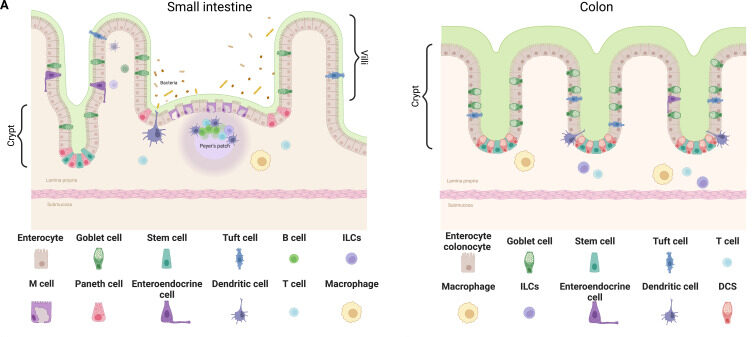
mBio, Aug 2023
Megan L. Stanifer, Stephanie Karst, Steeve Boulant
Regionalization of the antiviral response in the gastrointestinal tract to provide spatially controlled host/pathogen interactions
As the largest mucosal surface, the gastrointestinal (GI) tract plays a key role in protecting the host against pathogen infections. It is a first line of defense against enteric viruses and must act to control infection while remaining tolerant to the high commensal bacteria load found within the GI tract. The GI tract can be divided into six main sections (stomach, duodenum, jejunum, ileum, colon, and rectum), and enteric pathogens have evolved to infect distinct parts of the GI tract. The intestinal epithelial cells (IECs) lining the GI tract are immune competent and can counteract these infections through their intrinsic immune response. Type I and type III interferons (IFNs) are antiviral cytokines that play a key role in protecting IECs against viruses with the type III IFN being the most important. Recent work has shown that IECs derived from the different sections of the GI tract display a unique expression of pattern recognition receptors used to fight pathogen infections. Additionally, it was also shown that these cells show a section-specific response to enteric viruses. This mini-review will discuss the molecular strategies used by IECs to detect and combat enteric viruses highlighting the differences existing along the entero-caudal axis of the GI tract. We will provide a perspective on how these spatially controlled mechanisms may influence virus tropism and discuss how the intestinal micro-environment may further shape the response of IECs to virus infections.
Visit Journal